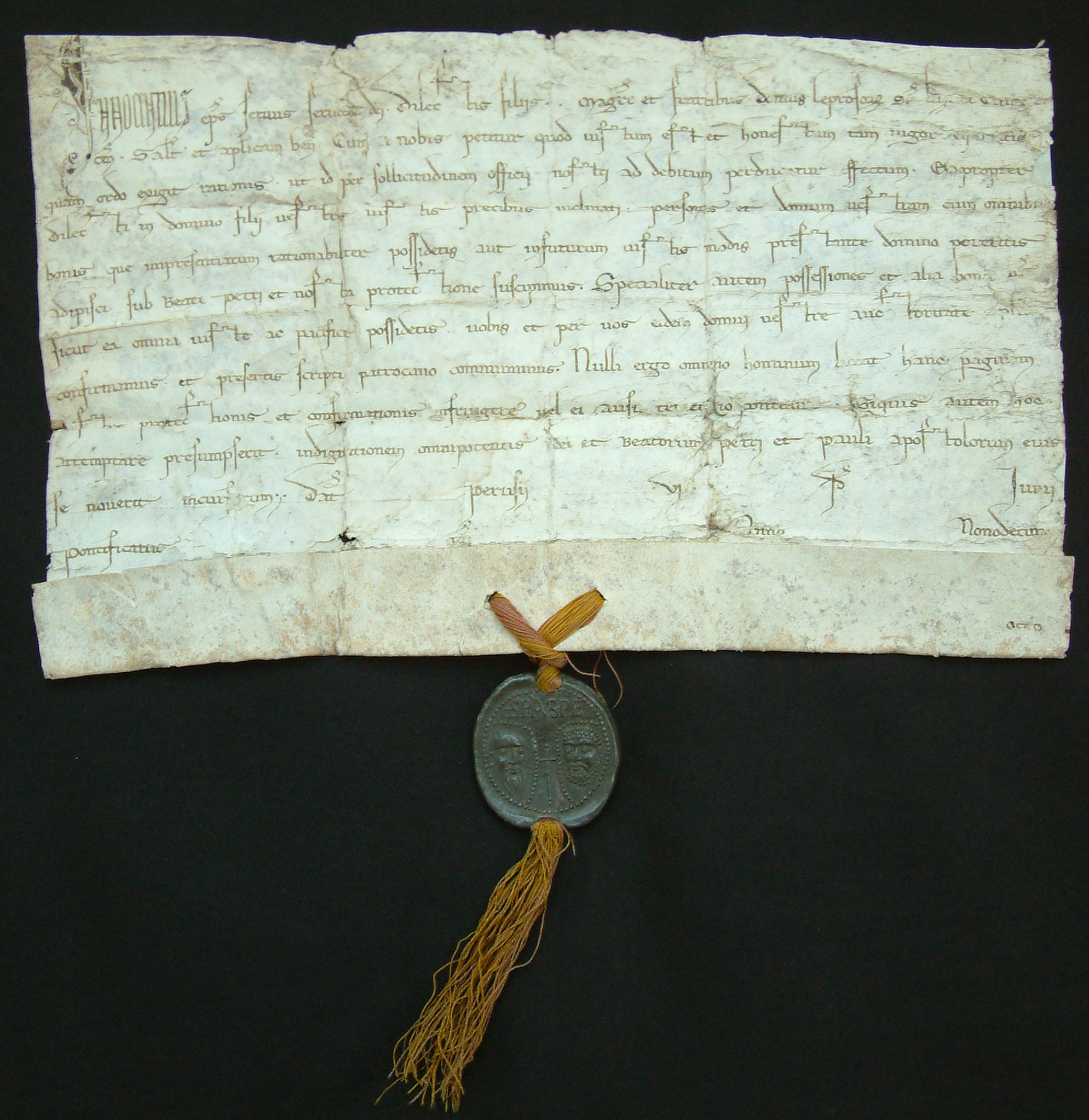“There are many important dates in the history the Middle Ages, but some notable ones were the issuance of the Papal Bulls and, in this instance, those issued for and against the medieval Knights Templar. A Papal Bull is a formal proclamation or order issued by the Pope and the use of “bull” is derived from the lead seal or “bulla” that is appended to the end of the order to authenticate it. Originally a Papal Bull was used for normal communications, but would evolve and used for formal and important occasions
The Knights Templar is said to have formed in 1118, but it did not have Papal recognition for another 2-decades. Initially the knights were received and formed by the permission of King Baldwin II of Jerusalem. In 1128, by the efforts of Bernard of Clairvaux the Council of Troyes convened and the Catholic Church officially recognized the Knights Templar. Following the Council of Troyes, three Papal Bulls were issued which further endorsed the Templars and defined them.
Omne Datum Optimum, Latin for Gift,” was a Papal Bull issued by Pope Innocent II in 1139 which endorsed the Knights Templar. It allowed the Templars to keep their spoils of war, placing donations directly under papal protection,and exempting them from paying tithing. This proclamation added a priest class to the hierarchy as well as making the members of order answerable to the Grand Master.
Milites Templi, Latin for “Soldiers of the Temple,” was issued by Pope Celestine II in 1144 gave ecclesiastical protection of the Knights Templar and further endorsed them by advocating that the faithful donate to the cause of the Templars. This along with the Templars annual collections and with the next Papal Bull laid the base for the Orders famous wealth.
Militia Dei, Latin for “Soldiers of God,” was issued by Pope Eugene III in 1145. This was somewhat controversial as it allowed the Templar priests to take tithes, build their own churches, collect property taxes from their tenants, and bury their dead in their own cemeteries. Some speculate that this gave the Order’s priests to take confession, but others believe this is a false assumption as no language exists within this Papal Bull that allows for such liberties.
On Friday, the 13th of October, 1307, the Templar suppression began by the French King with support by the Holy See. The French King had the Templars charged with heresy and many other trumped-up charges, most of which were identical to the charges which had previously been leveled by Phillip’s agents against Pope Boniface VIII. The first papal bull dealing with the fall and dismantling of the Templars wouldn’t come for another month and would begin with Pastoralis Praeeminentiae, but would include 9 others.
Pastoralis Praeeminentiae, Latin for “Pastoral Preeminence,” was issued by Pope Clement V on 22 November 1307. This bull was sent to all Christian monarchs and ordered the arrest of all Knights Templar and the seizure of all their properties. In spite of this request not all monarchs complied immediately; some did not believe the accusations and required more force by the Church for the arrests, confiscation, and investigation to occur in places like England.
Faciens Misercordiam, Latin for “Granting forgiveness,” was issued by Pope Clement V on August 12, 1308. This bull called for the creation of an Ecumenical Council as a part of the trials against the Knight Templars, the creation of commissions who ran investigations into the charges leveled against the Templars, and established formal structures for the confiscation of Templar property and possessions. This council was asked to be held in 1310, but would not be held until 1311, and is important because it vested the fate of the Templars with the Papacy and not any of the monarchs.
Regnans in Coelis, Latin for “Reigning in Heaven,” was the 15th Ecumenical Council which was held in Vienne located in Southern France. They met between 1311 and 1312, and its principle purpose was to formally withdraw the papal support given to Knights Templar as well as dealing with the massive properties that they had accumulated over the centuries. The Templars were allowed to have representatives at this council; the Grand Master was requested to attend, but was imprisoned in Paris by the French king. Those attending the Council were 20 cardinals, 4 patriarchs, around 100 archbishops and bishops, plus several abbots and priors.
Vox in Excelso, Latin for “A Voice from on High,” was issued by Pope Clement V in 1312. This bull formally dissolved and removed all Papal support from the Templar Order, but did not wholly condemn the Templars which goes along with his actions of secretly absolving the Templar Order with the Chinon Parchment. “
source travelingtemplar.com


